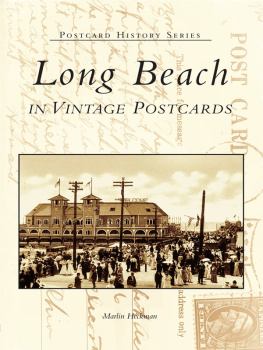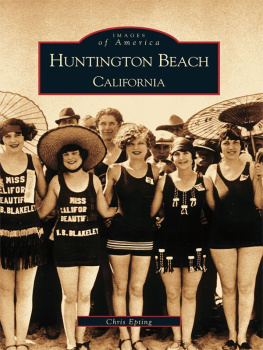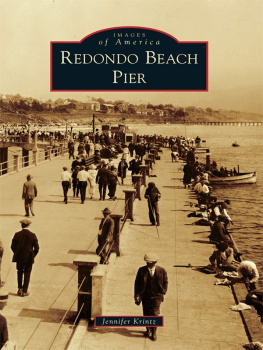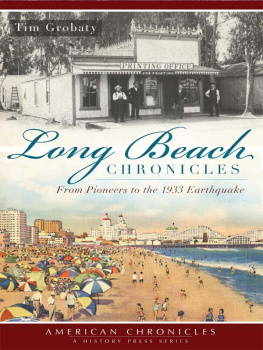

Published by The History Press
Charleston, SC 29403
www.historypress.net
Copyright 2012 by Jan Dennis
All rights reserved
All images in this volume are from the authors collection.
First published 2012
e-book edition 2012
Manufactured in the United States
ISBN 978.1.61423.808.9
Library of Congress CIP data applied for.
print edition ISBN 978.1.60949.908.2
Notice: The information in this book is true and complete to the best of our knowledge. It is offered without guarantee on the part of the author or The History Press. The author and The History Press disclaim all liability in connection with the use of this book.
All rights reserved. No part of this book may be reproduced or transmitted in any form whatsoever without prior written permission from the publisher except in the case of brief quotations embodied in critical articles and reviews.
Contents
Acknowledgements
An appreciative thank you goes to Heidi Maerker, CEO/President of the El Segundo Herald Publications. These articles were originally published from 2009 into 2011 in the Manhattan Beach Sun newspaper, part of Herald Publications newspaper group, located in El Segundo, California. The Manhattan Beach Sun can be found online at www.heraldpublications.com.
Putting together historical columns for a community that just celebrated its 100th year of incorporation takes many hours of compiling, organizing and researching many sources. My appreciation and acknowledgments go to those many citizens who supplied photographs from private collections, as well as brochures, maps and papers.
The text in the columns and photographs has been arranged in chronological order to give the reader the feeling of the citys creation and progression. Much of the information in this book was first revealed or recounted in different order in my six prior books.
These acknowledgments would not be complete without expressing my gratitude to Jerry Roberts, commissioning editor of The History Press, for his help with the development of this volume.
Introduction
Throughout this volume we will introduce several of the elements that make Manhattan Beach, California, one of the much desired and tranquil residential addresses in the Los Angeles area.
Sixteen miles from what is now Manhattan Beach lies the city of Los Angeles, founded in 1781. However, not until the Santa Fe Railroad laid tracks passing through this area in 1888 would there be real interest in developing the virtues of these four square miles. Potential settlers were drawn to the South Bay area through brochures published by development firms such as the Redondo Beach and Centinela-Inglewood Land Companies.
Originally, the land on which todays city is located was a broad series of sand dunes on an elevated shoreline that stretched from Playa del Rey to Redondo Beach. Over the years, the topography of the sand dunes has changed.
Transportation routes in the late 1800s were sparse, especially in the undeveloped area of Manhattan Beach. In 1897, the Potencia Townsite Company purchased the Manhattan Beach waterfront, which was slowly becoming the downtown site. A few years later, in 1901, John Shirley Ward, president of the company, arranged for a siding on the Santa Fe rail line, providing a landing for supplies, machinery and equipment brought in for the construction of the first pier.
This was followed by the Pacific Electric Railway, known as the Red Car, in 1903. With better transportation, people could live near the shore yet work in Los Angeles or other areas in the L.A. Basin. It would not be until after World War II, with returning GIs and an increase in the aircraft and space industries, that dramatic increases occurred in the communitys population and development and housing patterns that are reflected today.

The neighborhoods of Manhattan Beach are seen here. Note the Manhattan Beach Pier at the end of Manhattan Beach Boulevard.
The clear skies, dry air, little or no humidity and comfortable nights characterize much of the weather through the years. Stormy westerly winds are out of the north, and a subtropical high-pressure belt is located to the south. The temperature in Manhattan Beach does not vary as much as in the surrounding areas due to the temperate effect of the ocean and the sea breeze, keeping the winters warmer and summers cooler. It is the combination of these factors and the people who choose to live here that makes the community a little bit of heaven on earth.
Today, as in the past, through social activities, education and business, as well as participation in local and community government, the city and its citizens strive to create a family-oriented town with stability and pride for future generations.
Chapter 1
Early Years
FIRST PEACE OFFICER
In 1881, several years prior to the incorporation of what is now Manhattan Beach, the nation was reading of the shootout at the O.K. Corral in Tombstone, Arizona. In 1901, when the first survey map of the Manhattan Beach town site was filled, Butch Cassidy and his gang were holding up steam trains and robbing banks, with law enforcement in hot pursuit.
There were various titles for the guardians of the peace: town marshal, county sheriff, state or territorial ranger and federal marshal. A quote by the famous sheriff Bat Masterson described these men very simply as just ordinary men who could shoot straight and had the most utter courage and perfect nerve and for the most part, a keen sense of right and wrong.
In the late 1800s, unlike many of the other towns in Southern California that were very settled and thriving, there was little need for law enforcement in the yet undeveloped area that would eventually become the city of Manhattan Beach. The terrain along the ocean coastline was but shifting sand dunes with the landscape covered with scrub brush and flowers, and wildlife as the only inhabitants. In the early 1900s, the population began to grow with the subdivisions of the town sites. This led to a rising movement for the territory to petition to become its own town out from under the control of the City of Los Angeles.
On December 2, 1912, with returns counted by the County Board of Supervisors, it was agreed that the territory was a duly incorporated municipal corporation of the sixth class, under the name and style of City of Manhattan Beach, becoming a self-governing community with an elected board of trustees. On December 7, 1812, Secretary of State Frank C. Jordan endorsed the findings.
The newly incorporated town, with a population of approximately six hundred, many of whom were only summer residents, was quick to put in place its own lawman. To our knowledge, there were no shootouts in early Manhattan Beach, but at the second meeting of the board of trustees, the first peace officer was appointed. Fred W. Petway became the city marshal, as well as the first fire fighting enforcement officer. Petway was on call twenty-four hours a day, seven days a week, with little equipment or training for the apprehension of lawbreakers. The city paid so poorly for the position that Marshal Petway was obliged to work odd jobs to supplement his wage.
As for law and order in the new town, Frank C. Hill was selected as city attorney. The first law enforcement case occurred in February 1913, with a disturbance of the peace charged against Joseph E. Hastings. Citizen Hastings had been arrested by Marshal Petway, found guilty and fined $15.99 by Judge C.E. Jenkins.
Next page
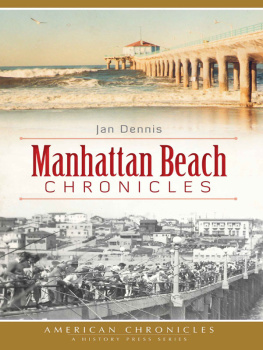

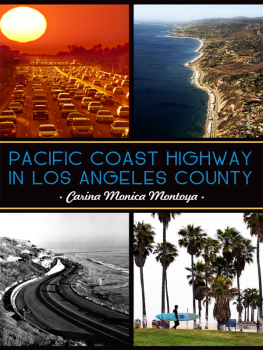
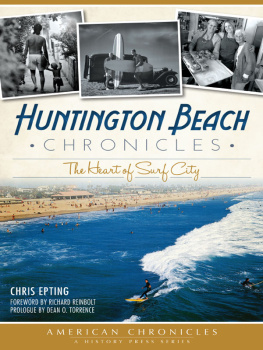

![Monroe - Beach house memories. [Bk. 2]](/uploads/posts/book/221230/thumbs/monroe-beach-house-memories-bk-2.jpg)
